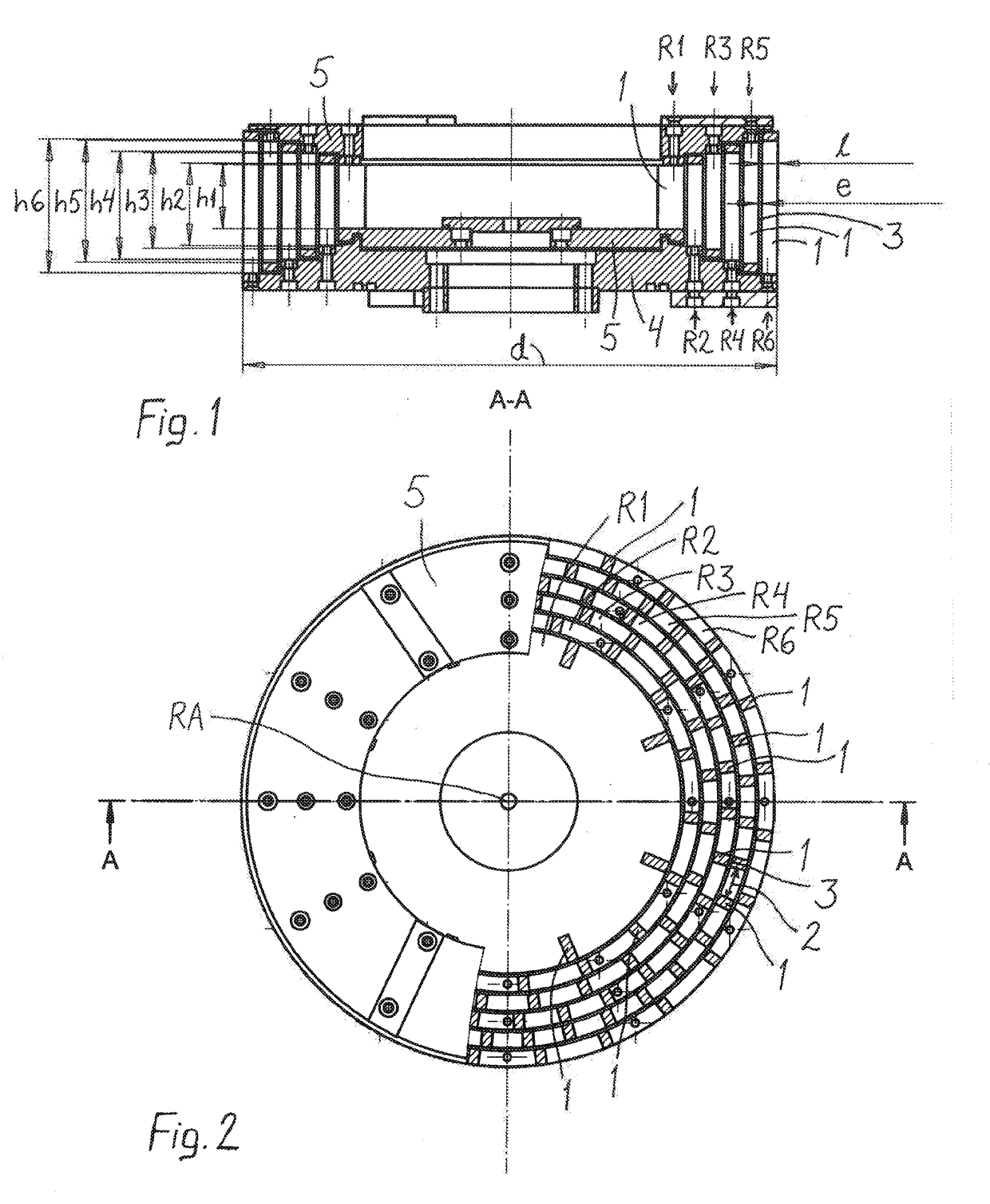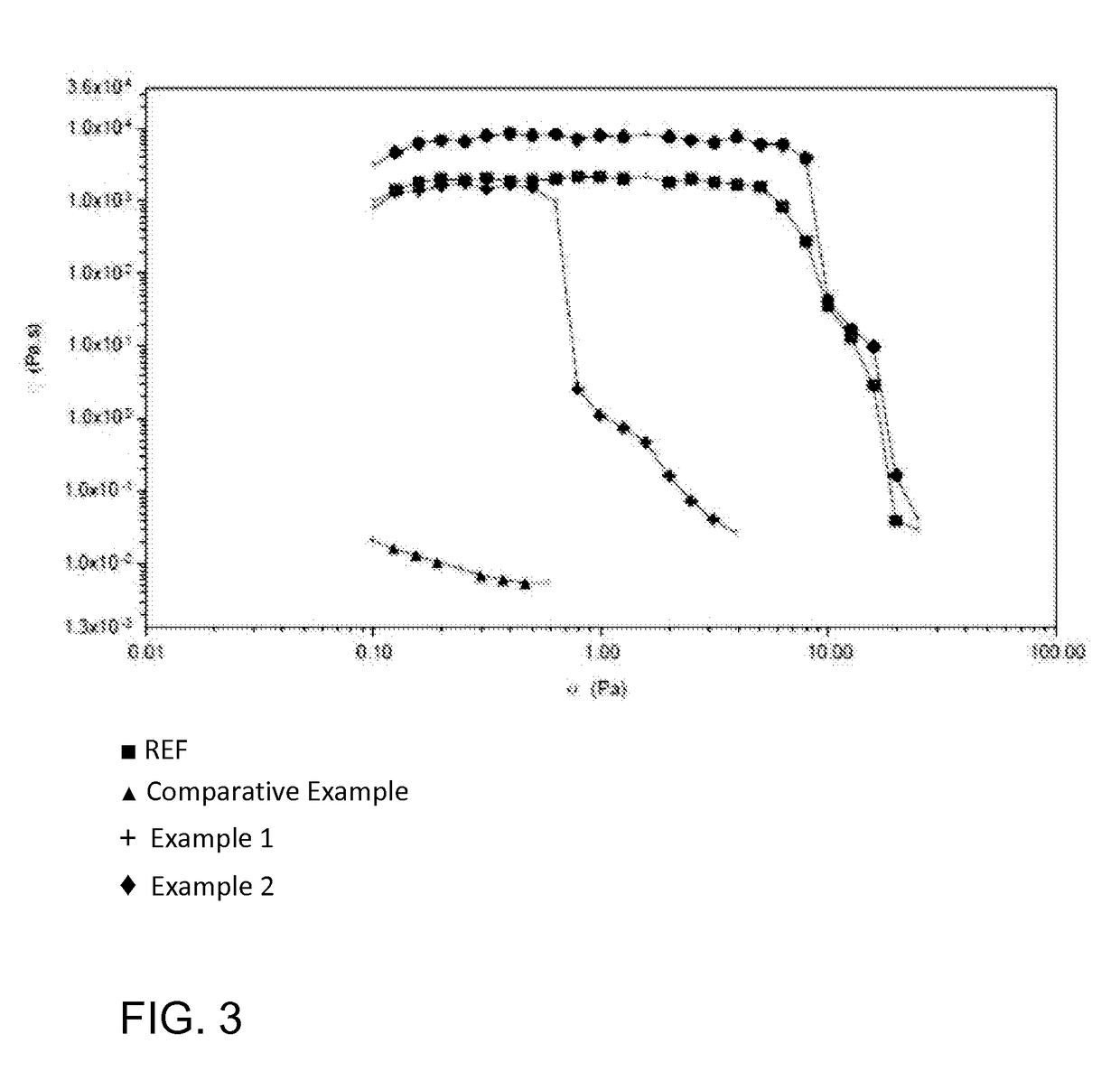Method for producing nanofibrillar cellulose and nanofibrillar cellulose product
a nanofibrillar cellulose and nanofibrillar technology, applied in pulp beating/refining methods, textiles and papermaking, paper/cardboard, etc., can solve the problems of inability to achieve high zero shear viscosity, difficult dewatering of nanofibrillar cellulose gels to increase dry matter content, etc., and achieve good capacity and higher consistency
- Summary
- Abstract
- Description
- Claims
- Application Information
AI Technical Summary
Benefits of technology
Problems solved by technology
Method used
Image
Examples
examples
[0069]In the following, the method is described by some examples which do not restrict the method.
Examples—Production of Nanofibrillar Cellulose in High Consistency
[0070]Cellulose birch pulp was anionically modified by “TEMPO” oxidation. Two modification levels: 0.77 mmol COOH / g pulp (22% dry solids) and 1.07 mmol COOH / g pulp (18% dry solids). The carboxylate content was determined by conductometric titration.
Reference Example (REF)
[0071]The anionic pulp (1.07 mmol COOH / g pulp) was dispersed to water to form 2.5% (w / w) dispersion. The dispersion was fed into a homogenizer (GEA Niro Soavi Panther) at 600 bar. As a result, viscous nanofibrillar cellulose gel was formed.
example 1
[0073]Anionic pulp (1.07 mmol COOH / g) in high consistency (starting consistency 18%) was run 3 times through a disperser (Atrex), through its series of counterrotating rotors. The disperser used had a diameter of 850 mm and rotation speed used was 1800 rpm. As a result, moist cellulose powder-like product was obtained.
example 2
[0074]Anionic pulp (1.07 mmol COOH / g) in high consistency (starting consistency 18%) was run 3 times through a disperser (Atrex), through its series of counterrotating rotors. The disperser used had a diameter of 850 mm and rotation speed used was 1800 rpm. After that, formed cellulose powder was dispersed to water to form 3.0% (w / w) dispersion. The dispersion was run 1 pass through the Atrex device. As a result, viscous nanofibrillar cellulose gel was formed.
[0075]To verify the success of fibrillation, rheological measurements of the product in the form of nanofibrillar cellulose hydrogels were carried out with a stress controlled rotational rheometer (ARG2, TA instruments, UK) equipped with four-bladed vane geometry. Samples were diluted with deionised water (200 g) to a concentration of 0.5 w % and mixed with Waring Blender (LB20E*, 0.5 L) 4×10 sec (20 000 rpm) with short break between the mixing. Rheometer measurement was made for the sample. The diameters of the cylindrical sam...
PUM
| Property | Measurement | Unit |
|---|---|---|
| yield stress | aaaaa | aaaaa |
| yield stress | aaaaa | aaaaa |
| zero shear viscosity | aaaaa | aaaaa |
Abstract
Description
Claims
Application Information
 Login to View More
Login to View More - R&D
- Intellectual Property
- Life Sciences
- Materials
- Tech Scout
- Unparalleled Data Quality
- Higher Quality Content
- 60% Fewer Hallucinations
Browse by: Latest US Patents, China's latest patents, Technical Efficacy Thesaurus, Application Domain, Technology Topic, Popular Technical Reports.
© 2025 PatSnap. All rights reserved.Legal|Privacy policy|Modern Slavery Act Transparency Statement|Sitemap|About US| Contact US: help@patsnap.com


